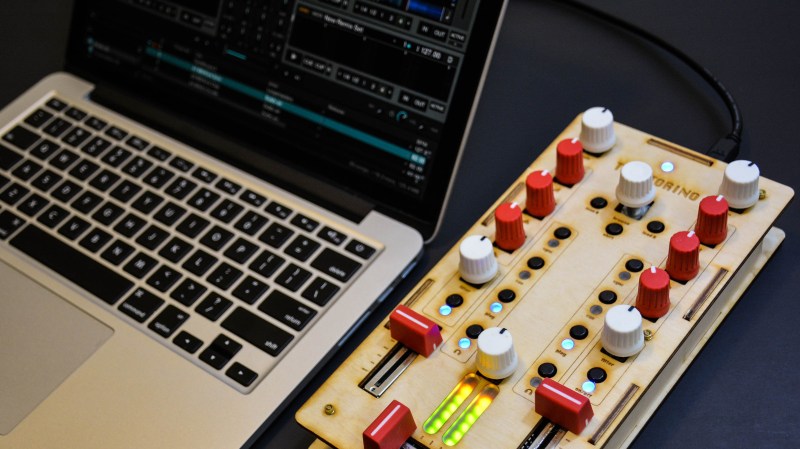On-screen controls in a digital audio workstation expand the power of a DJ or musician, but they are not intuitive for everyone. The tactility of buttons, knobs, sliders and real-world controls feels nothing like using a mouse, trackpad, or even a touchscreen. Unfortunately, devices meant to put control into a DJs hands can be unavailable due to location or cost. [Gustavo Silveira] took charge of the situation so he could help other DJs and musicians take control of their workstations with a customized MIDI interface for Traktor DJ software.
MIDI is a widely used serial protocol which has evolved from a DIN connector to USB, and now it is also wireless. This means that the Traktorino is not locked to Traktor despite the namesake. On the Hackaday.io page, there’s even a list of other workstations it will work with, but since many workstations, all the good ones anyway, accept MIDI hardware like this, the real list is a lot longer.
The custom circuit board is actually a shield. Using an Arduino UNO, the current poster child of the Arduino world, opens up the accessibility for many people who don’t know specialized software. A vector drawing for a lasercut enclosure is also included. This means that even the labeling on the buttons are not locked into English language.
Here’s another project which combined laser cutting and MIDI to make some very clever buttons or turn your DIN MIDI connector into USB.



















I spy with my little eye the smaller version of those Bourns slider pots. Not cheap, but very fun.
a good alternative to traktor is Mixxx an open source alternative https://mixxx.org/
Yep I have used it. Pretty good freeware :) Even if someone isn’t into DJing, it is still fun to make mashups with and doing drops.
Lol on my iOS device email titles get trucated. This title got truncated to “[New post] Tracktorino Shields You From Poo“
You might need a number of them in the event that poo hits the fan.
B^)
Really disappointed this had nothing to do with tractors…
Looks like more buttons are needed on it.
I like this. It’s a chore to get the details from Hackaday.IO (as usual, TOO MUCH Scripting NEEDED HaD!) I think a better approach would be to do the whole physical enclosure from PCB’s, thereby eliminating the need for a laser cutter. Plus the PCB’s will come labeled out of the box via the silk-screen layer. Very few of us have access to laser cutters. Everyone has access to decent quality PCB FABs at low cost. But then again, it takes from days to weeks to get the PCBs from a professional FAB.